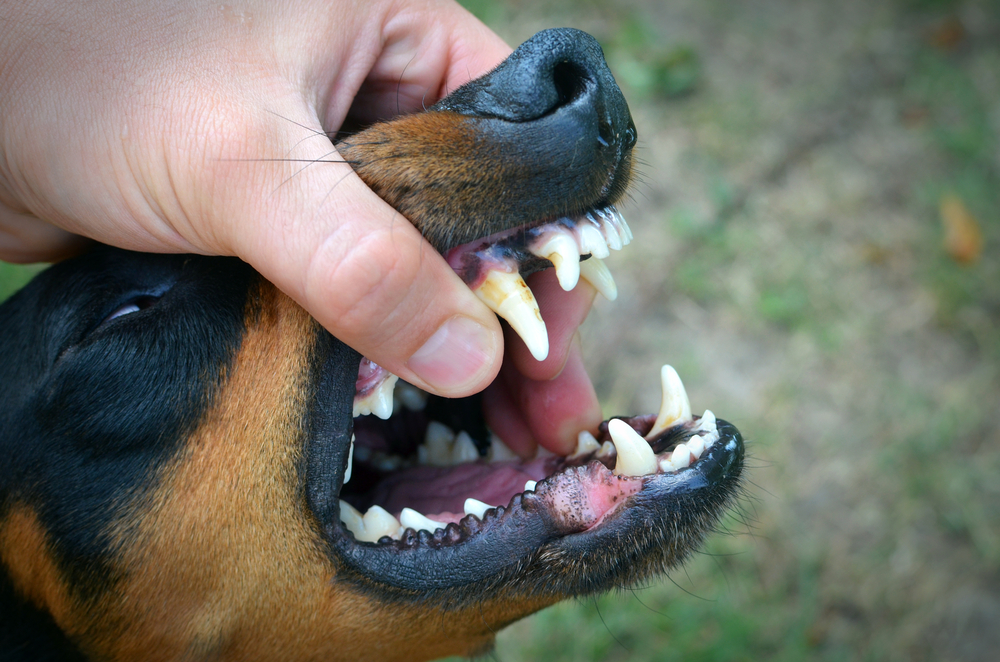Are Your Kids Safe Around a Strange Dog?
Kids love dogs, and may be eager to pet a dog encountered in the park or a neighbor’s yard. But, is it safe for your child to engage with a stranger’s dog? Is it safe for you?
The disturbing answer is that dogs—even household pets—can be dangerous. And, that’s not limited to strange dogs you and your kids may encounter in public places. According to the CDC, about 4.5 million people are bitten by dogs each year, and about 900,000 of those bites become infected.
Naturally, the risk of dog bites becomes more significant as there are more dogs in our environment and we come in more frequent contact with them. Between 2000 and 2017, the number of dogs living in U.S. homes increased from 68 million to 89.9 million—an increase of more than 32%. Thus, it is becoming increasingly important that people educate themselves about how to protect themselves and their children against dog bite injuries.
Children are at a Greater Risk for Dog Bites
Children are the victims of more than half of all dog bites, though they make up only 24% of the population. More than 300,000 children visit emergency rooms each year as a result of dog bites. That number is all the more significant when you consider the fact that only about 20% of dog bites require medical attention.
Children between the ages of 5 and 9 are at greatest risk for serious dog bite injuries. In addition, more than 75% of children under the age of 10 who are injured by dog bites suffer facial injuries.
Children are at greater risk for dog bite injuries for many reasons, including:
• They are often less able to recognize signs of danger and respond accordingly
• They are more likely to panic and escalate the situation when a dog becomes aggressive
• Their smaller size and the greater likelihood that they will be sitting or playing on the ground make their faces and other vulnerable areas more accessible to dogs
• Their smaller size means that similar bites will often result in more serious injuries to a child than to an adult
Most Dog Bite Fatalities are Children
The number of dog bite deaths in the United States each year is low. For example, in 2016 there were 31 dog bite fatalities nationwide. However, it is important to note that about 80% of these fatalities involve children. Children are particularly vulnerable to fatal dog attacks when they are left alone with the dog or wander into an area where the dog is present without an adult.
”Friendly” Dogs Bite, Too
While parents are most likely to caution children to be careful around “strange dogs” and children are more likely to fear dogs that they don’t know, familiar dogs can present a danger, as well. This is particularly true for very young children. In fact, 47% of dog bite injuries to children under the age of four are perpetrated by the family dog.
Although family dogs and usually-friendly neighborhood dogs occasionally attack quite unexpectedly, certain actions may provoke an otherwise harmless pet. For example, a familiar dog may bite when:
• It is startled or grabbed unexpectedly
• It is interrupted while eating
• Someone attempts to take food or something else of perceived value away from the dog
• A person trips on or accidentally hurts or frightens the dog
Overall, more than 60% of dog bites occur at home or in a familiar place such as a friend’s or relative’s home. According to the Insurance Information Institute, insurance companies paid out more than $600 million in homeowner’s insurance claims related to dog bites in 2016. That’s more than 1/3 of all benefits paid under homeowner’s insurance policies.
The Most Dangerous Dog Breeds
Any type of dog may bite, but some breeds are more prone to attacking humans than others. While pit bulls are widely deemed the most dangerous of dogs, that doesn’t mean that they are the most likely to bite.
Breeds of dogs that have been known to bite people include:
• German Shepherd
• Chihuahua
• Bulldog
• Pit Bull
• Australian Shepherd
• Lhasa Apso
• Jack Russell Terrier
• Cocker Spaniel
• Bull Terrier
• Pekingese
• Papillion
Many of the dogs on this list, such as Chihuahuas, Pekingese and Papillons, are quite small. While they have sharp little teeth and may draw blood and even cause scarring, these dogs are less likely to cause serious or fatal injuries. On the other hand, certain larger and more powerful dogs such as German Shepherds are more likely to do serious harm.
It is no wonder that Pit Bulls earned their reputation as America’s most dangerous dogs not because they bite most frequently, but because they are responsible for more deaths than any other breed. In the 12-year period from 2005-2016, Pit Bulls and Rottweilers were responsible for 297 of the 392 dog bite fatalities in the United States. Pit Bulls led the pack by a considerable margin. For example, in 2016, Pit Bulls were responsible for 71% of all dog bite fatalities and 86% of all fatal attacks by family dogs.
In addition:
• In 60% of all attacks by unfamiliar dogs, Pit Bulls are the aggressors
• Pit Bull bite injuries are three times as likely to require surgical intervention as bites inflicted by other breeds
• Ultimately, Pit Bulls are 48% more likely than other breeds to attack without provocation
Protecting Against Dog Bites
Although these statistics may be intimidating, more than 44% of U.S. households include at least one dog, and the vast majority do no harm. While unprovoked and unexpected dog attacks occasionally occur, taking simple precautions with animals helps to protect against most risks.
Some quick tips to offer your children (and know yourself!) to avoid dog bite injuries include:
• Never stare a dog, especially a strange dog, directly in the eye—it may be interpreted as aggression
• Keep a safe distance from any dog that is caring for puppies
• Do not run from a dog or make loud noises
• Never touch a dog, especially one you do not know well, when it is sleeping
• Do not grab a dog from behind or above
• Never interrupt a dog while it is eating or drinking
Help for Dog Bite Victims in California
California law protects dog bite victims by making a dog’s owner liable for damages associated with a dog bite under most circumstances. Regardless of the dog’s prior behavior or whether the owner had reason to expect that the dog might be dangerous, he or she will be responsible to the injured party if the bite occurred in a public place or on private property where the victim was lawfully present. This includes the dog’s own home.
If you or your child has been bitten by a dog, you may be entitled to compensation. The specific compensation will vary from case to case, but commonly includes:
• Pain and suffering
• Medical expenses
• Disfigurement
Calling experienced Los Angeles Attorney Yarian & Associates, can be the best source of information about your rights and options.










